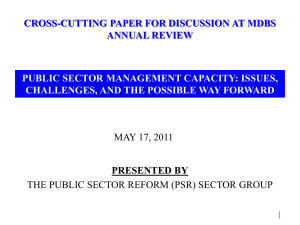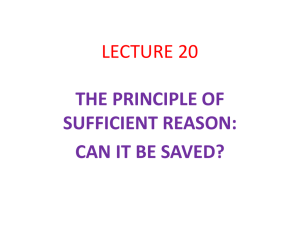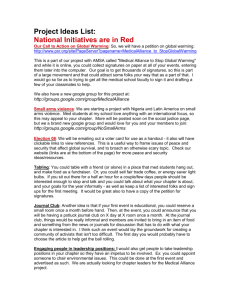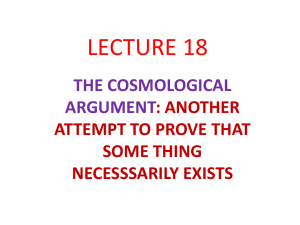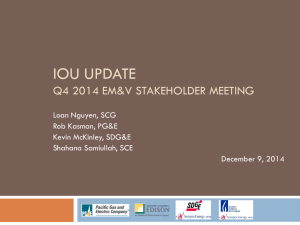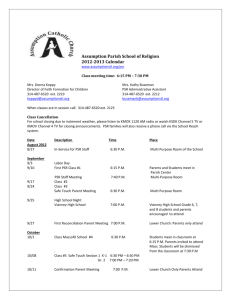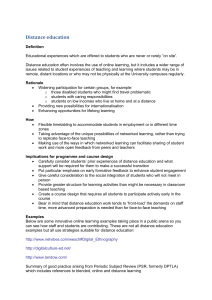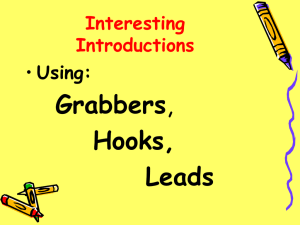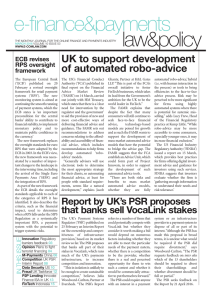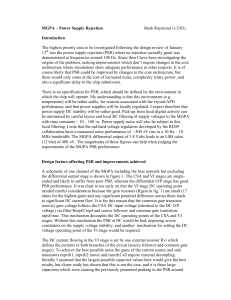Chapter 13 Study Guide and Activities
advertisement
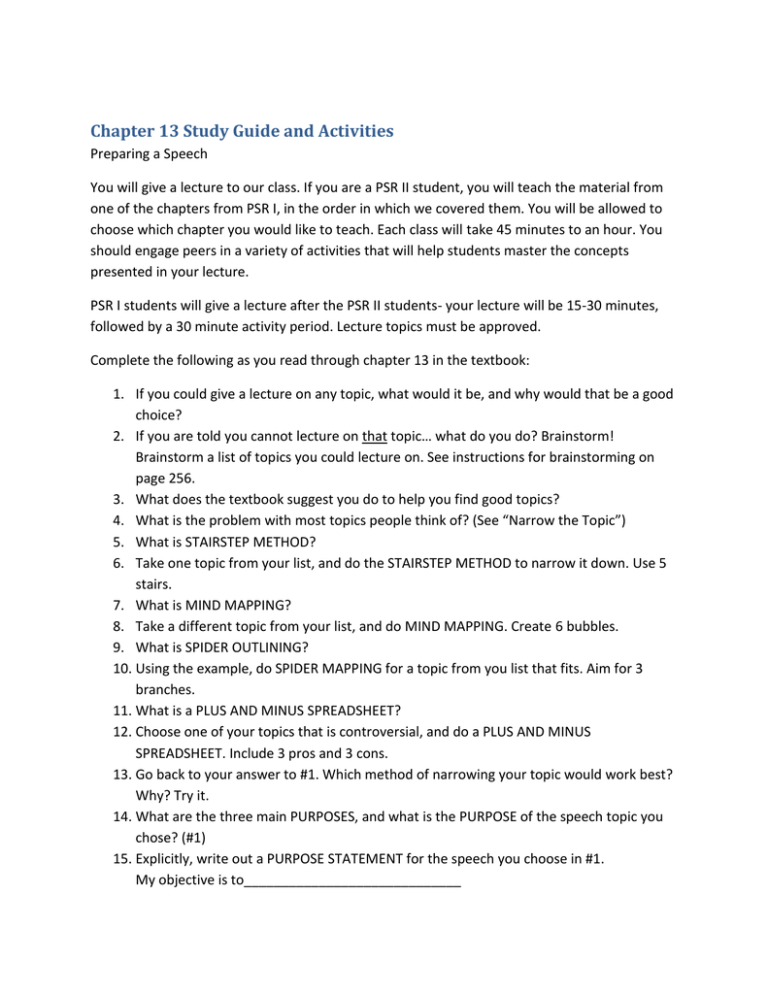
Chapter 13 Study Guide and Activities Preparing a Speech You will give a lecture to our class. If you are a PSR II student, you will teach the material from one of the chapters from PSR I, in the order in which we covered them. You will be allowed to choose which chapter you would like to teach. Each class will take 45 minutes to an hour. You should engage peers in a variety of activities that will help students master the concepts presented in your lecture. PSR I students will give a lecture after the PSR II students- your lecture will be 15-30 minutes, followed by a 30 minute activity period. Lecture topics must be approved. Complete the following as you read through chapter 13 in the textbook: 1. If you could give a lecture on any topic, what would it be, and why would that be a good choice? 2. If you are told you cannot lecture on that topic… what do you do? Brainstorm! Brainstorm a list of topics you could lecture on. See instructions for brainstorming on page 256. 3. What does the textbook suggest you do to help you find good topics? 4. What is the problem with most topics people think of? (See “Narrow the Topic”) 5. What is STAIRSTEP METHOD? 6. Take one topic from your list, and do the STAIRSTEP METHOD to narrow it down. Use 5 stairs. 7. What is MIND MAPPING? 8. Take a different topic from your list, and do MIND MAPPING. Create 6 bubbles. 9. What is SPIDER OUTLINING? 10. Using the example, do SPIDER MAPPING for a topic from you list that fits. Aim for 3 branches. 11. What is a PLUS AND MINUS SPREADSHEET? 12. Choose one of your topics that is controversial, and do a PLUS AND MINUS SPREADSHEET. Include 3 pros and 3 cons. 13. Go back to your answer to #1. Which method of narrowing your topic would work best? Why? Try it. 14. What are the three main PURPOSES, and what is the PURPOSE of the speech topic you chose? (#1) 15. Explicitly, write out a PURPOSE STATEMENT for the speech you choose in #1. My objective is to_____________________________ 16. What are the four types of information you need to know about your audience? 17. What does the term DEMOGRAPHICS refer to? 18. What are the demographics of our class? (include the instructor) 19. How much do you think your audience would know about the topic you chose? 20. What are the different attitudes audiences typically have? 21. What do you think your audience’s attitude will be for your speech? 22. What does AUDIENCE GOAL refer to? (264) 23. What are the three possible goals? 24. Should a speaker include anything personal in his/her speech? (270) 25. For your chosen speech (P.S. you may not be giving that speech yet, but will at some point, so this is not wasted effort)- what personal anecdote could you use? 26. What three things do you need to ask yourself about each example, fact, quote, or anecdote? 27. What is the difference between a PURPOSE STATEMENT and a CENTRAL IDEA STATEMENT? 28. What would be a good CENTRAL IDEA STATEMENT for the topic you chose? (#1) 29. What MAIN HEADINGS would suit your topic? 30. For your topic, using 5 of the SUPPORT MATERIAL options, complete the chart- in the last column (“Use to…” include what specifically, for YOUR topic, the specific support material will be used for. EXAMPLE: Support Material Definition MY material Use to… Fact Example Information based on evidence Illustration of something Personal Anecdote Short narrative Definition Statement explaining meaning Winter nights are typically 0-17 degrees e.g. last weekend it was 0 degrees; two weekends ago it dropped to 12 at night Describing lying in sleeping bag feeling the tent walls begin to freeze 3 season tents are not intended for the winter because they don’t have a vent, and have two layers instead of one Emphasize the need for proper gear Show that it really is cold Shows how easily we could have frozen too. Explaining different types of gear, and how to adapt safely with what you have 31. What is the difference between a TOPIC OUTLINE and a SENTENCE OUTLINE? 32. What are the FOUR METHODS OF DELIVERY? 33. Make a rubric you can use while you rehearse your speech. Use the list on page 278. 34. Who might you ask for FEEDBACK? 35. Do you think the actual lecture will take the same time that it takes you to read/ rehearse the lecture at home? Shorter? Longer? Explain. 36. What are the 7 typical kinds of MEDIA AIDS people use in speeches? 37. Would your chosen speech benefit from MEDIA AIDS? How so? What kind? PSR II Non Graduate STUDENTS: What topic do you REALLY want to lecture on? (does NOT have to be topic you used here for the worksheet) __________________________________________________
